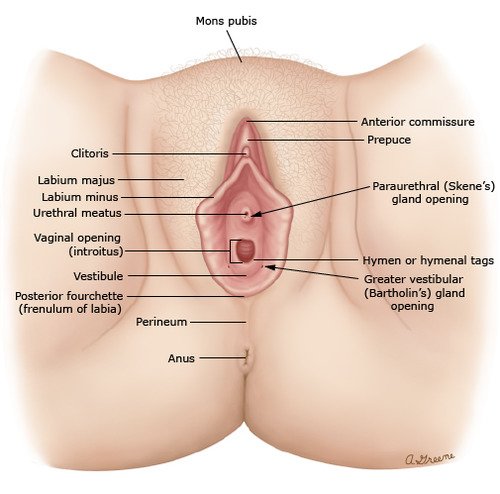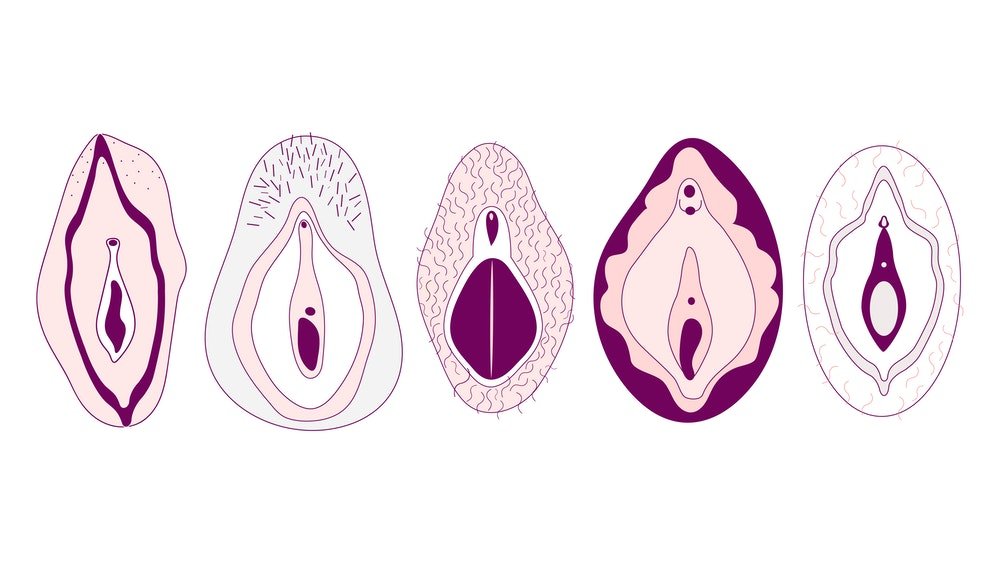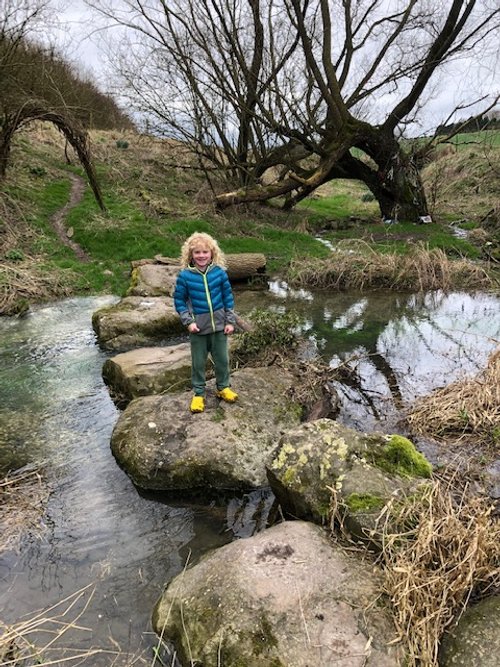Cunt!
I bet that got your attention didn’t it! It certainly got mine when I was on a course with Yoni Shakti teacher, Uma Dinsmore-Tuli, and she used the term. I had always been taught never to use it, that it was totally out of bounds, the most uncouth word in the English language, and hearing her using it in class was completely out of my comfort zone. I wasn’t sure what to make of it, could I trust this woman who was calling a vagina (as I used to call it back then) a cunt?
It still interests me to this day how challenged we are by anything outside our conventional thinking or understanding; how we will likely feel a sense of distrust towards anyone who is somehow different to us, who looks, behaves or talks in an unfamiliar or slightly edgy way. This to the extent that we may well reject them simply because it challenges our perception of right/wrong, good/bad, acceptable/unacceptable, and therefore throws into question how we’ve been taught how to see and perceive the world.
The word ‘cunt’ kept appearing in my life though. Every time I read Uma’s definition of the term ‘Yoni Shakti’, there it was in black and white in her book, Yoni Shakti, a fabulous creation on all things yoni, yoga and Tantric. But for many years when sharing this definition from her book during my Yoni Yoga classes, I would skip the word ‘cunt’ simply because I couldn’t bring myself to say it out loud.
However, the word continued to bubble in and out of my consciousness. For example, it appeared in a Tantra course recently and one of my friend’s uses it a lot, not least as a swear word but to define what I now call a yoni, and what you might call a vagina or a flower or vulva or pussy, or any of the many terms that are used to describe this most amazing part of a female’s body.
However not all these words are accurate, the word ‘vagina’, for example, only relates to the sexual passage of the female from the vulva to the uterus, not the entire female genitalia. ‘The word ‘cunt’, however, like ‘yoni’, describes the whole lot, external and internal, including labia, vulva, pudendum, vagina, and clitoris. Therefore the term ‘cunt’ actually allows for female sexual pleasure, because it includes all the bits and bobs, which might be visited during sexual exploration.
This is another subject that interests me, female sexual pleasure, and the extent to which so many women don’t experience this, not least in their own exploration of their yoni, or indeed cunt, through masturbation for example, but also in their sexual relationship with another, even if that relationship is loving and - on some level - intimate. Many women simply cannot give voice to what they need, still feeling that they have to do what they do to meet the other person’s needs, many still have a notion of what sex is based on what they see on the big screen with all that thrusting and well, more thrusting, and many just don’t know what to do about it and suffer on in silence hoping things will change.
Today conducted a poll In honor of Women's History month back in 2020 and 46% of females reported not being sexually satisfied. This is a big deal. On the recent Tantra course, a number of the women expressed similar concerns, that they struggled to touch their yoni for pleasure, let alone experience orgasm with a partner. Many were attending the course for that very reason, to be guided to connect more deeply with their yoni with the intention of opening to greater pleasure and reaching orgasm. Despite the support and sensitive guidance some just couldn’t do it though, touching their yoni was just too much for them, and their feelings of disempowerment continued.
It was during this same course that a discussion arose about terminology and the fact the word ‘cunt’ still has so much shame attached to it, despite, as referenced above, it describing the entirety of the female genitalia. Further, I have recognised that even the term ‘yoni’ can be challenging for some women, let alone mention of menstruation. Many women just don’t talk about their genitalia or in any way relate to it, it’s just something ‘down there’ that certainly isn’t talked to or looked at, or in any way respected. This made me consider that to reclaim our power as women, we really do need to form a more intimate relationship with our yoni, or cunt then, so that we are less ashamed by it and by the terminology we use to describe it.
In many respects it’s a patriarchal hangover and a frustrating one at that. I was told recently that rates of cancer of the vulva on the Guernsey are on the increase, and in younger women too. I have experienced first hand the devastating effect of this cancer, losing a young friend to it in September and another family member suffering with it since then, who is now fortunately on the mend. But both of them left it late to seek medical advice simply because of the embarrassment of approaching a doctor about their genitalia.
This highlights to me how far we still have to go as women to not only deepen our connection to our body but also to reclaim our inherent sexual power. Many have no idea what their genitalia looks like, let alone the wisdom of the womb space and sacral chakra. Many have no idea about the wisdom of the menstrual cycle and the messages our monthly pains and tribulations may be trying to convey to us, let alone issues ‘in this area of the body’, such as fibroids, endometriosis, infertility and menstrual irregularities/blood flow. And as mentioned above, still more have no idea how to access pleasure and experience orgasm.
All of this inspires me to continue sharing Yoni Yoga with women locally, because it helps women to access their yoni and connect with their innate wisdom. It is a healing and nourishing practice which really changes things - and I talk from experience. It heals trauma, whether that be from birth, termination, medical procedure(s), IVF and/or sexual and can help women to access sensation and pleasure therefore. It helps to connect women more deeply with their creative, passionate and sexual energy of this chakra, which is huge - a woman in her sexual power is alive and bursting with limitless potential.
Inherent within all this, for me at least, is the need to reclaim the word ‘cunt’ and use it without shame or awkwardness. It feels important, that in using this old term, it helps to further liberate me from the binds of patriarchy that has made it offensive, that has turned the female genitalia into something shameful and hidden and that has denied women their most incredible shakti energy and power.
I began researching the history of the term ‘cunt’ and what I found was rather interesting. The earliest known use of the word - according to the Oxford English dictionary - was as part of a place name of a London street called Gropecunt Lane in 1230. The word was not as taboo back in the Middle Ages as it is now, becoming taboo towards the end of the eighteenth century, and then it wasn’t allowable in print until the later part of the twentieth century!
The actual etymology of ‘cunt’ is still a matter of some debate. However most sources consider the word to have derived from a Germanic word which appeared as kunta in Old Norse, but it is impossible to really know exactly where it originated . The prefix ‘cu’ has been deemed “quintessentially feminine” and pre-dates written language and therefore it is found in many forms such as ‘cu’, ‘qu’, ‘coo’, ‘qy’ or ‘cy’. There are many varied and interesting linguistic paths that could be taken in exploring this in depth but I stumbled across an article written by “cherishthecunt”(oh how I love this!) and am going to share some of his/her findings because they are especially interesting to me at least…
In india, for example, “it is believed that the word ‘Cunt’ came from the Proto German word ‘Kunto’ which is said to have come from the Indo-European word ‘Kunti’ which is the name of a much respected and revered Hindu goddess who was also known as ‘Cunti-Devi’ and is said to be the ruler of ‘Kunta’ which we know as ‘Kundalini’ energy. The snake like feminine energy that travels up our spine. Legend stories say how she sang to the gods to call them to sleep with her. She eventually had a son with the Sun God, Surya and ‘The Teachings of Queen Kunti’ can still be read today.
Many say that ‘Cunt’ derived from the Oriental Great Goddess Cunti, also known in ancient Hinduism as the ‘Yoni of the Universe’ (yoni means ‘sacred temple’ in Sanskrit and is used to describe the womb and cunt). Also Indian children who were born out of wedlock were know as ‘Kuntas’ and revered as gifts of the Goddess Kunti’. The word ‘Kunda’ is also used in India for a hole or pit in the ground (agni-kunda, fire-pit) for storing fire on alters in the Vedic religion.”
What I’m particularly fond of, however, is the connection to the River Kennet in Wiltshire and Swallowhead Springs, which I visited with Elijah back in February, where the the Mary ley line comes through both the Great River Kennet and through the spring. I LOVE springs and wells, I’m a water being and they really calm me and there’s just something profoundly magical about them, especially at night; I often sit by a well in Guernsey and there’s one I love in Sark too, they’re wonderful places for meditation and being still.
Swallowhead Springs had quite an effect on me, albeit I didn’t realise about the Mary ley line until later. For whatever reason I have been weaving my way, following the Mary and St Michael lines, during my last three trips in the UK. The White Spring in Glastonbury, one of my most favourite places in the world, for the cleansing and uplifting effect it has on me, is on the Michael ley line, which continues its way up Glastonbury Tor to meet with the Mary ley line, creating a chalice and the grail, and in effect therefore the sacred marriage…what’s there not to love about that!
But anyway, what’s fascinating about all this (bear with me), is the fact that the River Kennet was known as ‘Cunnit’ until 1740 and many people believe this is related to the word ‘cunt’. As “cherishthecunt” writes, “ it is a beautiful, vibrant river and a home to many species of plants, animals and fish. One of the Kennet’s sources is a chalk cave named Swallowhead Spring near Silbury Hill, a prehistoric artificial chalk mound which is part of the UNESCO Heritage site that includes Stonehenge and Avebury. At 40 metres it is the tallest human-made mound in Europe and one of the largest in the world.
It is thought to be approximately 4750 years old. Many people believe that it was built as a representation of the pregnant belly of a Celtic Goddess called ‘Sil’ or ‘Sulis’ who was worshipped in that area of Celtic Britain and in north-western France. Her name tells us she was both a sun and an eye-goddess (eyes =wisdom and all-seeing, just like the sun). And local historian, Michael Dames believes that the quarry surrounding it was deliberately shaped to resemble the rest of her head, neck and body. He takes this one step further by suggesting that if Silbury Hill is the pregnant belly, then the cave from which the Swallowhead Spring begins is ‘The Cunt’ with the River Cunnit flowing from it.”
Certainly in my neolithic world of menhirs, dolmens, springs and rivers, there is a deep connection to cunt and to masculine and feminine energy and the sacred marriage of the land, of union and consciousness. Menhirs are representation of the lingam, the masculine, it’s phallic symbolism obvious, and dolmens represent the feminine, leading to the womb of the earth, or the cunt, in its entirety therefore. And here we are, Beltane only days aways, which celebrates the sacred marriage, the union of the earth and the sky, which has been re-enacted by humans throughout the centuries. This is the night of the Greenwood marriage, of sensuality, passion, sexuality, vitality, joy and conception.
But back to ‘cunt’, what fascinates me is how the word has become such a negative one, as if a representation of the manner in which women with sexual power got a bad reputation when society became patriarchal and the notions of female sexual power and goddesses disappeared. There are many who think that the word is only an insult if you believe strong women with sexual desire are a bad thing, which I don’t, but patriarchal society still has us believing so…
And so, if you go to vocabulary.com for example, then you find the following definition:
‘A vulgar slang word for a woman's genitals or a person you dislike, cunt is a contender for most offensive word in English. The c-word should be avoided at all costs. This is one of the most disliked and inappropriate words around. The word is a little more accepted in England as a term for a jerk, but in the U.S., you'll rarely hear this word because it is considered obscene and extremely offensive to women. The main thing you need to know about this word is that you really shouldn't use it. Ever.”
This seems a shame though doesn’t it, that a word that is used to describe all the whole shebang of the female genital inside and out should be so, well, shamed, despised and hated. I don’t feel that way about the word and each time that I use it, I feel more comfortable in doing so. I used it this week during my Yoni Yoga class to set the scene, and I wasn’t concerned as I may have been previously, about how it is received, because in my humble way of seeing things, it is time to reclaim our sexual power and not be so shamed about our beautiful cunt with all its magic and mystery and opportunity to take us to deeper places within on ALL levels of being.
So here’s to the cunt in all her glory, and may you ladies take care of yours, commune with it and hear what ‘she’ has to say, and honour your inherent sexual power and energy for the benefit of the whole of humanity and this planet. This Sunday I am teaching a Yoni Yoga class to celebrate Beltane and tap into the potent energy at this turning of the wheel, and to deepen connection to our innate female power and wisdom through yoni (cunt) and heart, all are welcome, you can sign up online.
Love Emma x



